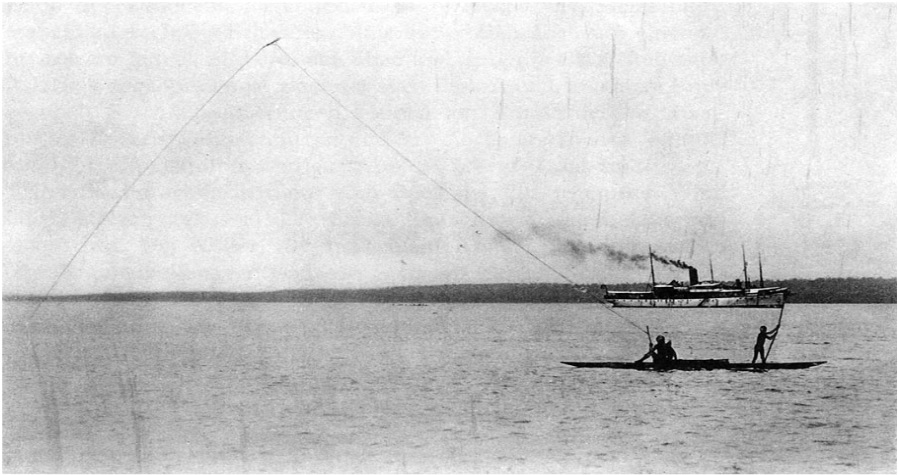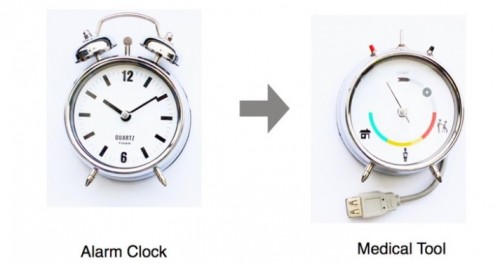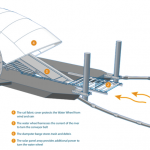
“We set out to sea but kept close to the canoe occupied by the two fishermen. Off the island the old fisherman gradually played out the kite. As it swung in the breeze we noticed that the webbing just had enough length so that it touched the surface of the sea with every soft fall of the canoe as it rose and dipped. Presently there was an agitation in the sea behind the canoe and we could see several fish coming to the surface. Apparently intrigued by the tantalizing touching of the surface by the webbing, the fish were jumping for it. Finally one caught the webbing in his mounth and with a shout, the old fisherman neatly hooked it in with a hand net.”
Picture: Kite-Fishing off Pitilu (Admiralty Islands) as photographed in 1908 by H. Vogel of the Hamburg Südsee Expedition.










